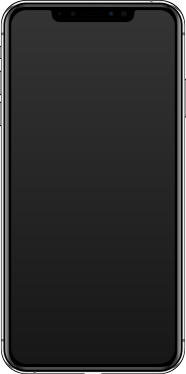 | |
iPhone is a line of smartphones designed and marketed by Apple Inc. The iPhone line of products use Apple's iOSmobile operating system software. The first-generation iPhone was released on June 29, 2007, and multiple new hardware iterations with new iOS releases have been released since.
The user interface is built around the device's multi-touch screen, including a virtual keyboard. The iPhone has Wi-Fi and can connect to cellular networks. An iPhone can shoot video (though this was not a standard feature until the iPhone 3GS), take photos, play music, send and receive email, browse the web, send and receive text messages, follow GPS navigation, record notes, perform mathematical calculations, and receive visual voicemail. Other functionality, such as video games, reference works, and social networking, can be enabled by downloading mobile apps. As of January 2017, Apple's App Store contained more than 2.2 million applications available for the iPhone.
Apple has released eleven generations of iPhone models, each accompanied by one of the eleven major releases of the iOS operating system. The original first-generation iPhone was a GSM phone and established design precedents, such as a button placement that has persisted throughout all releases and a screen size maintained for the next four iterations. The iPhone 3G added 3G network support, and was followed by the 3GS with improved improved hardware and the voice assistant Siri. The iPhone 5 featured a taller, 4-inch display and Apple's newly introduced Lightning connector. In 2013, Apple released the 5S with improved hardware and a fingerprint reader, and the lower-cost 5C, a version of the 5 with colored plastic casings instead of metal. They were followed by the larger iPhone 6, with models featuring 4.7-and-5.5-inch (120 and 140 mm) displays. The iPhone 6S was introduced the following year, which featured hardware upgrades and support for pressure-sensitive touch inputs, as well as the SE—which featured hardware from the 6S but the smaller form factor of the 5S. In 2016, Apple unveiled the iPhone 7 and 7 Plus, which add water resistance, improved system and graphics performance, a new rear dual-camera setup on the Plus model, and new color options, while removing the 3.5 mm headphone jack found on previous models. The iPhone 8 and 8 Plus were released in 2017, adding a glass back and an improved screen and camera. The iPhone X was released alongside the 8 and 8 Plus, with its highlights being a near bezel-less design, an improved camera and a new facial recognition system, named Face ID, but having no home button, and therefore, no Touch ID. In September 2018, Apple again released 3 new iPhones, which are the iPhone XS, an upgraded version of the since discontinued iPhone X, IPhone XS Max, a larger variant with the series' biggest display as of 2018 and iPhone XR, a lower end version of the iPhone X.
The original iPhone was described as "revolutionary" and a "game-changer" for the mobile phone industry. Newer iterations have also garnered praise, and the iPhone's success has been credited with helping to make Apple one of the world's most valuable publicly traded companies.





No comments:
Post a Comment